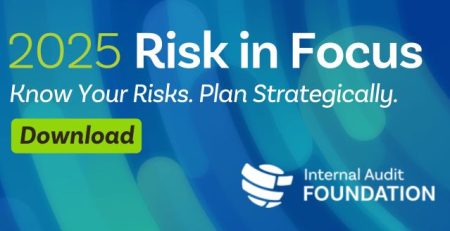NEW! Internal Audit Foundation and Deloitte Report — “Moving Internal Audit Deeper Into the Digital Age: Part 3, Beyond Theory — Scaling Automation Capabilities in Internal Auditing.”
LAKE MARY, Fla. USA (XX December 2020) — The Internal Audit Foundation and Deloitte conducted an online survey among IIA members to gain insight into where different internal audit organizations stand with respect to auditing automation and cognitive technologies. Based on responses from internal audit leaders across a broad range of companies, the key findings shed light on where many organizations are making progress and where gaps may still remain. These key findings are outlined and explored in a three-part report series.
The final release, “Moving Internal Audit Deeper Into the Digital Age: Part 3, Beyond Theory — Scaling Automation Capabilities in Internal Auditing,” is now available for download.
While the challenges of managing a digital workforce alongside a human one are significant, internal audit organizations that fail to incorporate these capabilities may be disrupted. Without the help of digital resources and talent, it is unlikely they will be able to keep up with the changing risk landscape and the evolving needs of the business.
As the velocity of change accelerates, the internal audit function has a fundamental choice: it can lead by embracing the future of work and showing other business functions how to develop and integrate digital resources, or it can follow and risk being left behind.
Effectively scaling analytics and automation capabilities requires a thorough understanding of what automation is and isn’t, along with focus, long-term commitment, and a clear vision of what a digitally enabled internal audit team looks like. Operational challenges such as access to data, availability of development resources, the complexity of the technology landscape, and changes in audit requirements can stand in the way. The six-step approach in this report has been designed to assist internal audit leaders in overcoming these common hurdles:
- Opportunity Identification
- Intake and Opportunity Pipeline Management
- Development and Deployment Management
- Monitoring, Maintenance, and Recertification
- Decommissioning
- Reporting
With this approach, internal audit leaders can more confidently begin to move analytics and automation beyond theory and toward actualization of the ultimate goal: creating an agile, insightful, and resilient internal audit organization that adds value to the business.
The three parts of the series share a common theme: ready or not, automation and cognitive technologies are here to stay. More specifically, the first part examines how to leverage automation to modernize the internal audit function; the second part explores what internal audit needs to think about when auditing automation; and this third part, the final installment, offers a blueprint for scaling digital capabilities and transforming the audit lifecycle.








